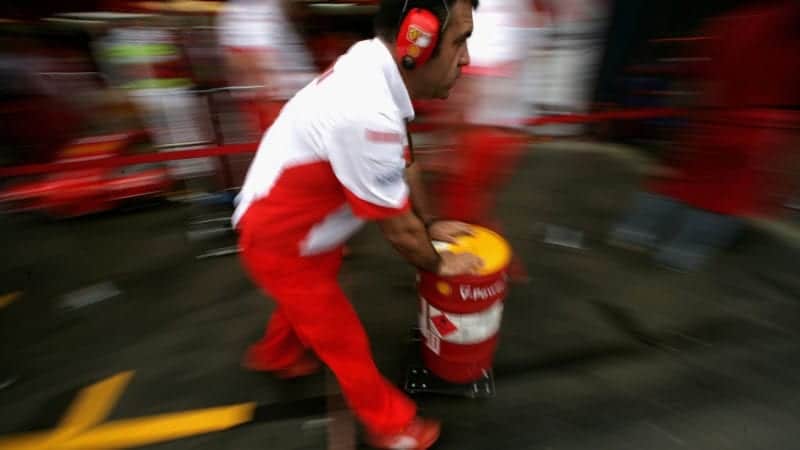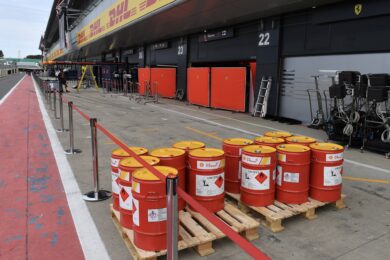F1 engine manufacturers have been asked to test and validate the fuel so that it can be developed by their respective suppliers, in preparation for the mandatory requirement for to use 100 per cent sustainable fuels when the next engine formula is introduced (in five to six years.)
These engines could potentially be two-stroke, with chief technical officer of Formula 1 Pat Symonds saying previously he still sees a future for the combustion engine in this form.
“(Two strokes are) Much more efficient, great sound from the exhaust and a lot of the problems with the old two strokes are just not relevant any more,” he said at the Motorsport Industry Association’s energy-efficient motorsport conference.
“It might be that the next power unit we produce is the last one we do with liquid hydrocarbons. I think there’s a very high chance that there might still be an internal combustion engine but maybe it’s running on hydrogen.
“I certainly think that the internal combustion engine has a long future and I think it has a future that’s longer than a lot of politicians realise because politicians are hanging everything on electric vehicles.
The petrol currently used in F1 cars is not too dissimilar from the fuel used in everyday road cars, albeit with the former using a more refined mix.
F1’s first push towards a more environmentally sustainable future came with the introduction of hybrid engines in 2014, and this push towards biofuel represents the next step.
“Formula 1 has long served as platform for introducing next generation advancements in the automotive world,” F1’s MD of motor sports Ross Brawn said, “We are delighted by the momentum on sustainable fuels which perfectly aligns with our plan to be net zero carbon as a sport by 2030.
“Our top sustainability priority now is building a roadmap for the hybrid engine that reduces emissions and has a real world benefit for road cars. We believe we have the opportunity to do that with a next generation engine that combines hybrid technology with sustainable fuels.”
What is biofuel?
Biofuels are typically plant-based, made from organic material that’s broken down and reformed into the hydrocarbon chains that make up fuel. They still emit carbon when burned, but as this was originally removed from the air by the plants, the process is seen as carbon neutral — if the biofuel production uses renewable energy.
F1 is also investigating synthetic fuels, in which hydrogen and carbon can be captured directly from the air.


